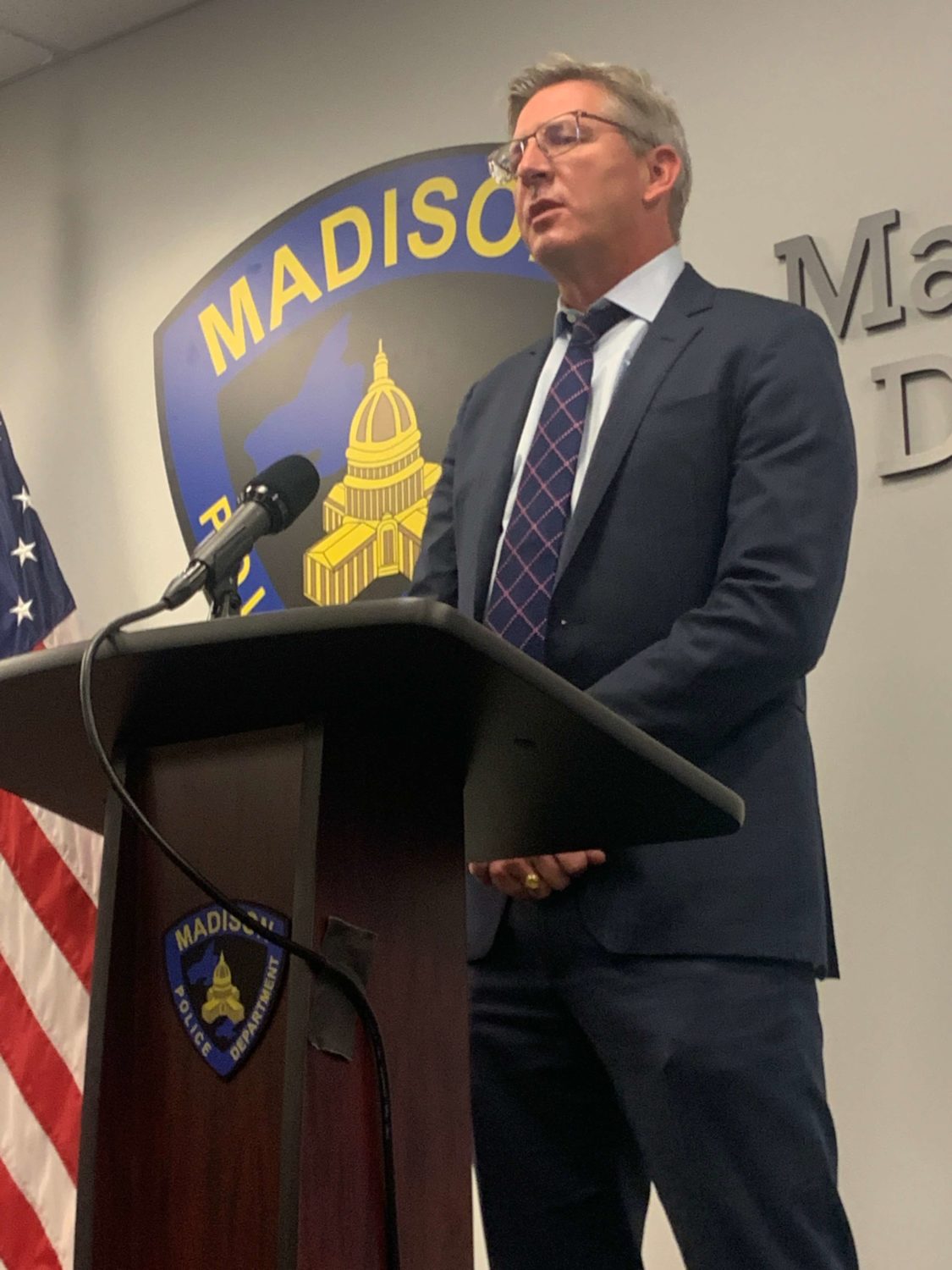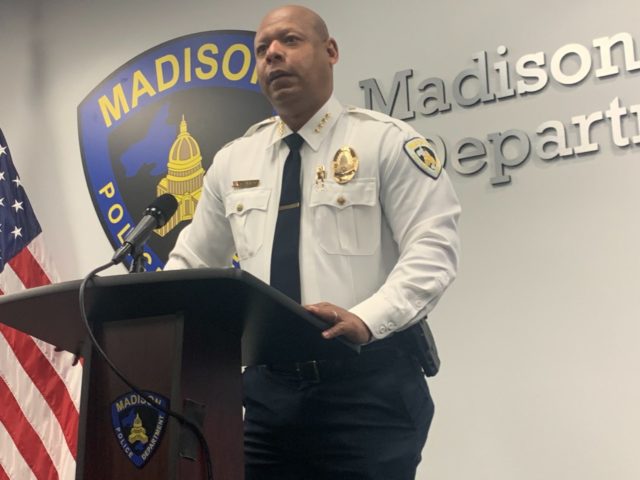A report on the Madison Police Department’s response to 2020’s racial justice protests found that the department should improve communication with members of the community, equip and train its officers for better communication during large events and work to instill trust and earn legitimacy.
The 132-page report, published Tuesday after months of research by the Quattrone Center for the Fair Administration of Justice, said Madison police were “unprepared” for the scale and emotion of the first round of protests in late May and early June of 2020, but were able to adapt and change tactics over the course of the summer to avoid escalating tensions.
“I think ‘unprepared,’ I would view as a statement of fact, rather than a criticism,” said Quattrone Center Executive Director John Hollway, noting that the size of the first major protest on May 30 exceeded expectations.
The report said use of “fixed line” tactics during the first night of protests escalated what had been a nonviolent protest during the day and fueled the few “instigators” who caused significant property damage that night.
“When the police are the subject of the protest, a demonstration of police force can become escalatory rather than calming,” said Madison Police Chief Shon Barnes.
Barnes was not employed by the Madison Police Department at the time of the protests, but said he welcomed the review to help guide improvement in the future. He especially pointed out the recommendations to create trust and legitimacy through open dialog with members of the community and protest organizers before, during and after protest events.
“Right now, we can improve our communication. We’ve been working with some of our community partners,” Barnes said. “The recommendation of having community dialogue representatives is something that our department explored last year, and we’re further exploring that. But that’s a partnership, between the police department and those community members who want to see that everyone’s safe. So that’s an immediate recommendation that we are exploring.”
The study looked at 14 “sentinel events” and 133 “contributing factors” during several periods of unrest: May 30-June 2 following the murder of George Floyd, late June after the arrest of Madison activist Yeshua Musa and late August following the shooting of Jacob Blake in Kenosha. The resulting report offered 69 specific recommendations.
One of the specific recommendations is to acquire and implement better equipment to communicate with the crowd.
“The Madison Police Department was using squad PAs and bullhorns to try to communicate to … the largest crowd that anybody had seen in downtown Madison in decades,” Hollway said.

Other recommendations include more training in crowd control for all Madison police officers and incident command training for all senior officers, so more officers would be available when needed and long shifts and burnout could be avoided.
Another recommendation was to equip officers with body-worn cameras to aid in the evaluation of officers and their tactics, something Barnes has advocated for but which has been resisted by some community leaders.
“I think it goes a long ways to establish trust and transparency with our public,” Barnes said.
In an appearance on the “It’s Only 10 Minutes” podcast, Barnes said he hopes to run a body-worn camera pilot project in the North District in the spring of 2022. He would require Madison Common Council approval to do so.
Barnes also said he thought the protests were a long time coming.
“These protests in my judgment were about more than just George Floyd. That certainly was the theme that brought everyone out, but police, we are the most visible form of government and we’re that form of government that has the ability to take away your freedom, and in some cases take away your life,” he said. “And people were frustrated by that. I think what you saw was, just in my judgment, was just accumulation of a lot. People seeing government not really work for them, paying taxes and not seeing the benefit of what they think is important. The person who’s not responsible for fixing that pothole in your street … You don’t know that person when they pass you on the street, but you know who we are. And so, I think it was just a mix of frustration with government in general.”
Hollway said Madison Police provided more than 1600 documents, more than 625 hours of video and more than 30 hours of audio. Hollway said they also interviewed more than 50 police officers and met with a group of community stakeholders for three to four hours weekly over the course of several months.
“The Madison Police Department volunteered for this. They were incredibly transparent in their participation,” Hollway said.
Among the members of that stakeholder group were representatives of Nehemiah Center, Urban League of Greater Madison, the Boys and Girls Clubs of Dane County, Centro Hispano of Dane County as well as several local and state law enforcement departments.
“I think there were a lot of lessons learned,” said Anthony Cooper, who represented Nehemiah Center in the discussions. “I think more conversations need to happen.”
Cooper said he is aware of several young protest organizers who were invited to participate but declined. None of the major organizing groups were represented in the stakeholder’s group, which Hollway said could be due to the required time commitment or even emotional trauma that comes with recalling the protest events.
“I don’t look at it as a first step because, for me, there’s so many more voices that need to be brought to the table before the steps can actually take place,” Cooper said.
The study was funded by a federal grant awarded in 2019 to study a “sentinel event”of MPD’s choosing. It was initially going to look at how police managed the annual “Shake the Lake” fireworks display, but Interim Chief Vic Wahl pivoted to study the 2020 protests instead.




























